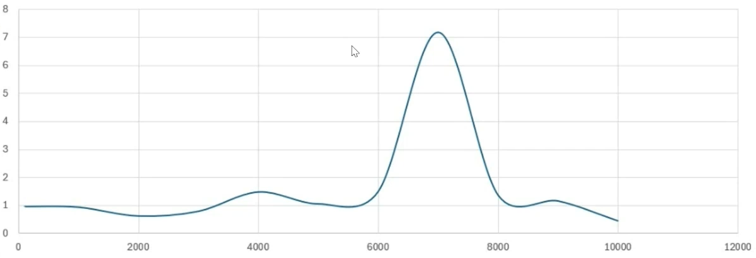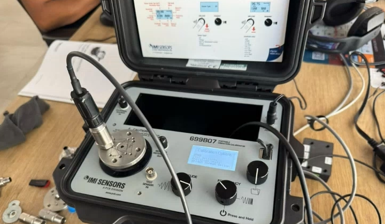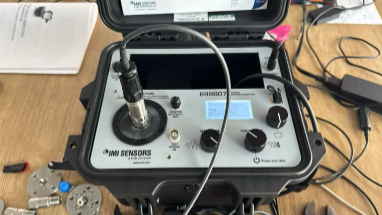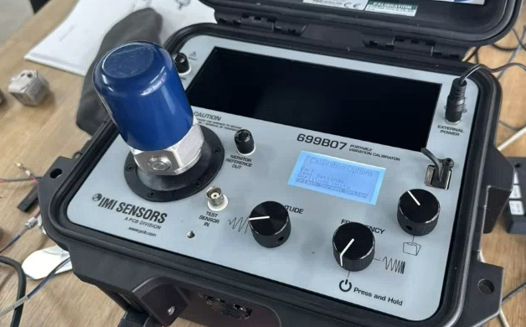The Impact of Increased Mass on a Vibration Shaker Table's Calibration and Output Signal
Vibration shaker tables are essential tools for calibrating sensors, testing equipment, and simulating real-world vibrational environments. These tables generate controlled vibrations to ensure accuracy and reliability in various applications. However, when additional mass is applied to a shaker table, the system’s dynamics are affected, leading to measurable changes in performance and output signals.
Effects of Increased Mass on the Shaker Table
Applying additional mass to a vibration shaker table influences several key parameters, including resonance frequency, amplitude response, and system stability.
Resonance Frequency Shift
- A shaker table operates within a defined frequency range, often targeting specific resonant frequencies for calibration.
- Increased mass lowers the natural frequency of the system, meaning the shaker table may struggle to achieve higher frequencies effectively.
- This shift can impact calibration accuracy, especially if the intended test frequencies exceed the modified system’s capabilities.
Reduced Vibration Amplitude
- Additional mass alters the dynamic response of the shaker table, leading to a reduction in vibration amplitude at a given input force.
- This effect occurs due to the increased inertia resisting movement, requiring greater force to maintain the desired amplitude.
- If the shaker table’s actuator is not sufficiently powerful, it may not be able to compensate for the mass increase, limiting its effectiveness.
Higher Energy Demand
- The system requires more power to vibrate heavier loads, leading to increased energy consumption.
- In cases where the power supply or control system cannot meet these demands, output signal distortions or irregularities may occur.
- Over time, excessive energy demands can strain components, accelerating wear and reducing operational lifespan.
Possible Structural Concerns
- Excessive mass can push the shaker table beyond its design limits, potentially causing mechanical failure.
- Overloading can stress joints, bearings, and support structures, increasing maintenance needs and reducing longevity.
- Some shaker tables include weight limits, and exceeding them may compromise system integrity.

Start of the change in natural frequency with a small mass

Example of greater mass with increased amplitude deformation and frequency

Greater mass = higher energy demand.

Visual example of poor weight distribution (off-centered mass)
Impact on Output Signal Accuracy
The accuracy of a vibration shaker table’s output signal directly correlates to the system’s ability to generate consistent vibrations. Increased mass can introduce signal distortions in several ways:
- Nonlinear Response: Larger masses may induce nonlinear system behaviors, affecting signal fidelity and calibration precision.
- Phase Shift: Changes in inertia can introduce phase lag in the output signal, impacting synchronization during calibration procedures.
- Variability in Frequency Response: The shaker table may exhibit inconsistent amplitude across different frequencies, requiring adjustments to maintain calibration integrity.
Mitigating the Effects of Increased Mass
To counteract the negative effects of increased mass, operators can:
- Use higher-capacity actuators capable of handling greater loads.
- Adjust control system parameters to maintain consistent vibration amplitudes.
- Implement damping mechanisms to stabilize excessive mass-induced vibrations.
- Ensure proper weight distribution to minimize mechanical stress on the shaker table.

Baseline comparison without interferences or added mass
Conclusion
While vibration shaker tables are versatile calibration tools, applying additional mass influences their frequency response, energy efficiency, and structural integrity. Operators must consider these effects to maintain calibration accuracy and prevent system degradation. By implementing corrective measures, shaker tables can continue providing reliable calibration results despite increased mass loads, however often in the field we do not consider the necessary corrective measures nor consider the test mass used to calibrate the portable shaker tables we use as analysts and engineers.
Dr. Michael Howard, is an American entrepreneur and Air Force veteran with a remarkable career in the predictive maintenance industry spanning over 30 years, and a variety of industrial sectors, including industrial manufacturing, reliability engineering, and instrumentation development and design organizations. Dr. Howard is a graduate of Excelsior University, Capella University, and New Charter University with degrees in Electro-Mechanical Engineering, Leadership and Organizational Management, and Engineering Management.
As the CEO of Erbessd Instruments, he leads strategy, sales, marketing, and operations in English-speaking markets. He is a certified reliability engineer, certified maintenance and reliability professional, and category III vibration analyst. Michael is a passionate advocate for wireless instrumentation, video deflection, and the Industrial Internet of Things (IIoT).
ERBESSD INSTRUMENTS® is a leading manufacturer of Vibration Analysis Equipment, Dynamic Balancing Machines, and Condition Monitoring with facilities in Mexico, the USA, the United Kingdom, and India.


